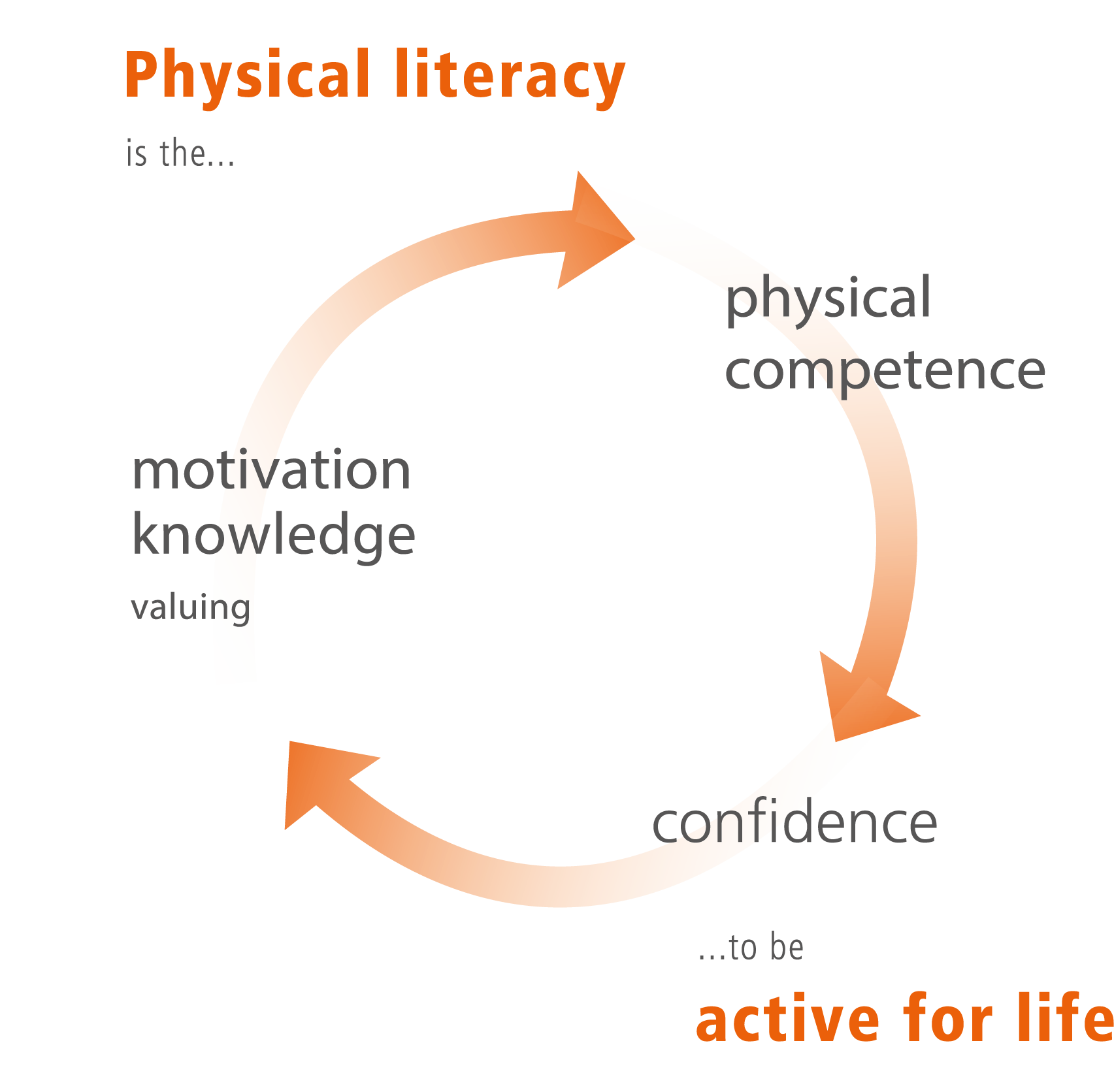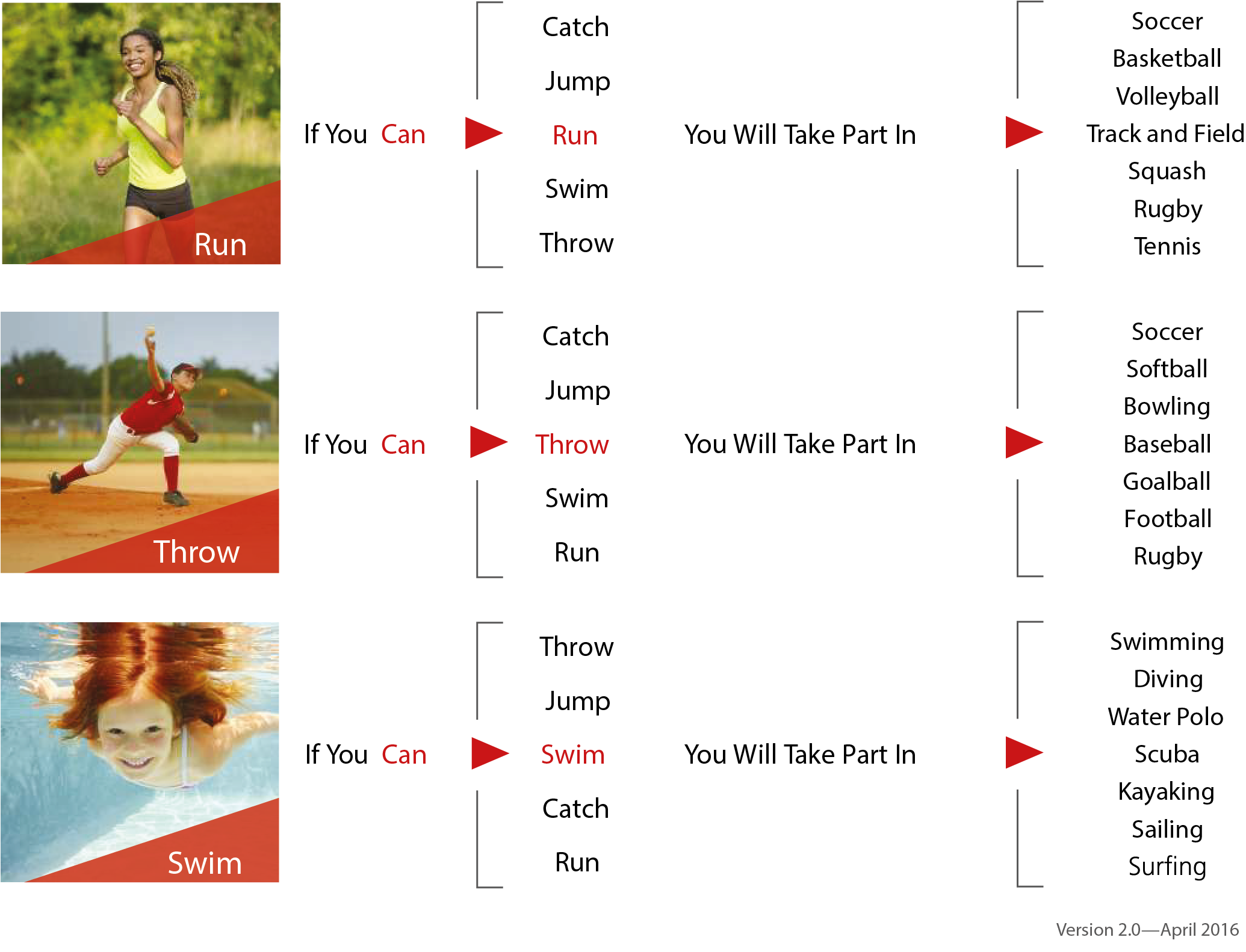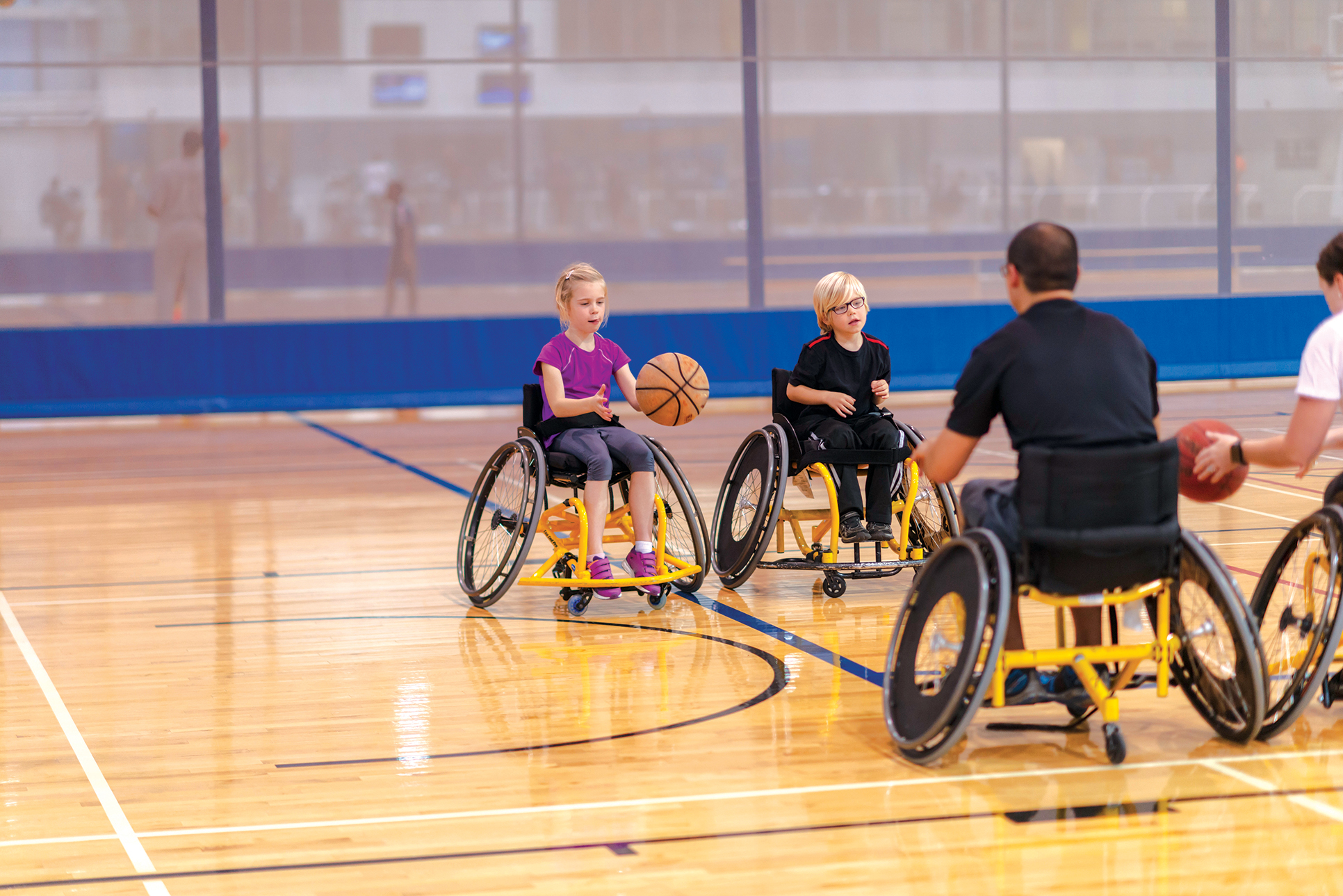By Andrea Carey, MED, CCIP
Physical literacy is symbiotic with inclusion. By developing physical literacy, you intentionally plan for and create inclusion in society, with your friends and family, in career opportunities and across your entire lifespan.
Barriers still exist, but the overall goal is to remove these barriers and improve the lives of as many people as possible through the joys of movement. However, physical literacy is distinct from other forms of physical activity and physical education because it’s intended to be a holistic, multi-faceted approach to developing personal skill sets. We need to consider how we create universal accessibility for all to participate—this takes into account:
- The attitudes of those working in facilities or delivering programs.
- The communication tools we are using to attract people to our programs that it is clear that the program is welcoming of them.
- The accessible facilities and equipment.
- The programs and services available for all abilities to participate.

“Physical literacy is the motivation, confidence, physical competence, knowledge, and understanding to value and take responsibility for engagement in physical activities for life.” – The International Physical Literacy Association
Persons with a disability often either do not get the opportunity to develop movement skills or they have to relearn movement skills, (or learn new ones) after an injury or when a deficit occurs. Movement skills are skills like running, wheeling, jumping, throwing, catching, kicking, swimming, striking and many more. The opportunity to practice in a wide variety of environments, outdoors and indoors, should be made available so that confidence and competence on the ground, on the ice, in the snow, in the water and up in the air can be achieved. This can only happen if coaches and other physical activity leaders ensure that their sport is accessible to everyone.
Persons with disabilities need to know that there are programs and environments that take their specific needs into account and welcome them to participate—we call this “Awareness”. When a person with a disability does go to a program or enters an environment, there needs to be a welcoming experience with leaders or coaches who can accommodate them, the equipment to include them and the supportive opportunities for success. We call this “First Involvement” and those early experiences are crucial to engagement and retention in physical activity and sport. That means providing leaders and coaches who are skilled enough to accommodate each person’s particular needs, knowledgeable about the adaptive equipment they’ll require and steadfastly supportive and encouraging as each person picks up new skills and puts them into practice.
It is critically important that all participants are exposed to and learn movements in supportive, fun and engaging environments, as early in life as possible. If you do not learn a skill, then you do not gain confidence in it and you will not be motivated to participate in activities or sports that require that skill. The graphic below articulates the importance of simple movement skills in the opportunity to participate in physical activities, sports and activities of daily living.

Every person has a physical literacy journey that is individual to them. Choice in activities is a motivating factor that influences a personal physical literacy journey. If a person wants to play basketball, let them play basketball—but they’ll need to develop basic skills like throwing and catching, as well as jumping, running or wheeling. If they want to try something you’re not prepared for, be creative, ask questions about what works and figure out how to modify the activity for them to be successful.
Another crucial part of the puzzle is role models. These days in Canada we have plenty of Paralympians for aspiring athletes to look up to. Some, like Quebec multisport star Cindy Ouellett, have even branched out into multiple sports. Giving participants a chance to watch and learn about figures like Cindy, and aspire to similar successes, is a powerful way to demonstrate the power and capability they may have themselves.
It demonstrates that with resilience and mental fortitude, human beings can often overcome seemingly hopeless odds.
The health benefits of physical literacy are innumerable, whether you’re talking about prevention of lifestyle related diseases, positive mental health or limiting the risk of injury. This is true for everyone, but especially true for those with disabilities.
Simply put, physical literacy gives participants an outlet for further growth in sport and all areas of life. This includes participating in the workforce, playing with family and friends, and engaging in a healthy lifestyle that includes daily exercise. Every individual has the right to access these opportunities. Facilities, organizations and leaders need to ensure that their programs are “open” for everyone to benefit from and enjoy. It’s just common sense!
Andrea Carey is the Chief Inclusion Officer for INclusion INcorporated and a Board Director with the Canadian Paralympic Committee. Andrea is an international expert on inclusion, physical literacy and a Canadian Certified Inclusion Professional.














